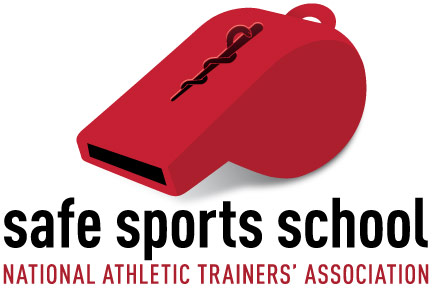Have Your School Nationally Recognized!
The Safe Sports School Award recognizes secondary schools around the country that take the crucial steps to keep their athletes free from injuries.
In order to achieve Safe Sports School status, athletic programs are required to adhere to the following:
- Create a positive athletic health care administrative system
- Provide or coordinate per-participation physical examinations
- Promote safe and appropriate practice and competition facilities
- Plan for selection, fit function and proper maintenance of athletic equipment
- Provide a permanent, appropriately equipped area to evaluate and treat injured athletes
- Develop injury and illness prevention strategies, including protocols for environmental conditions
- Provide or facilitate injury intervention
- Create and rehearse venue-specific emergency action plans
- Provide or facilitate psycho-social consultation and nutritional counseling/education
- Be sure athletes and parents are educated of the potential benefits and risks in sports as well as their responsibilities
The application for a Safe Sports School Award outlines the specific actions that will lead an athletics program to the highest safety standards for its athletes.
A school may earn a First or Second Team Award:
- First Team is awarded to schools that act on all of the recommended and required elements.
- Second Team is granted to schools that have completed only required elements.
Any secondary school can apply. Schools qualifying for either award will receive a banner to promote their achievement.
Program Notes
- As of July 1, 2025, the cost of application for all schools – new and renewing – is $150.
- An individual application is required for each school.
- Applications must be in the school’s name, not the school district.
- Renewing schools can only renew within 60 days before their award’s expiration date.
- Applications can take up to six weeks to process.
- As of 2024, grant payments for awards will be reimbursed and are unable to be accepted ahead of the application process.
- As of 2024, bulk pricing discounts are no longer available.
- Each Safe Sports School Award recipient will receive one banner. NATA can order additional banners upon request; however, the school will be responsible for the cost.
- All awards must be submitted through the online portal. Paper applications won’t be accepted and will result in a delay of communication.
- Invoices need to be paid within three months of receiving award notification or your application will be closed and you will need to apply again. If more time is needed, email engage@nata.org.
- If you have any questions about the Safe Sports School Award program, contact staff at engage@nata.org.

